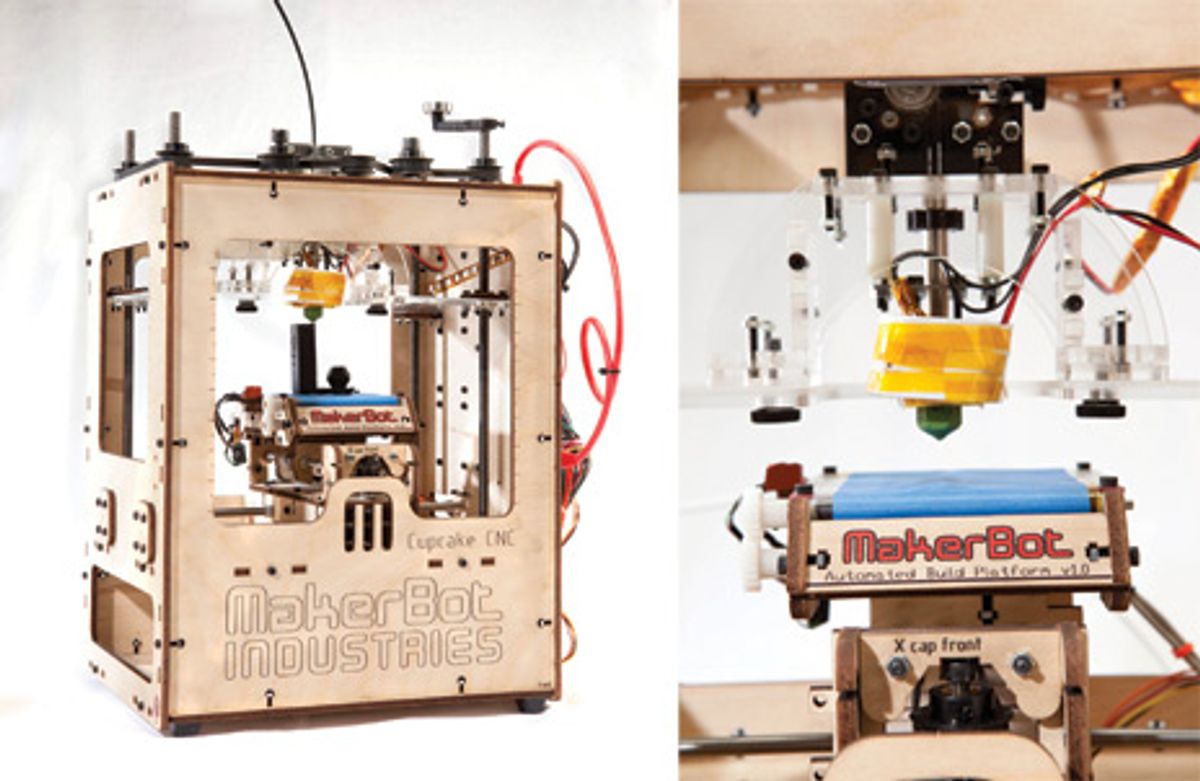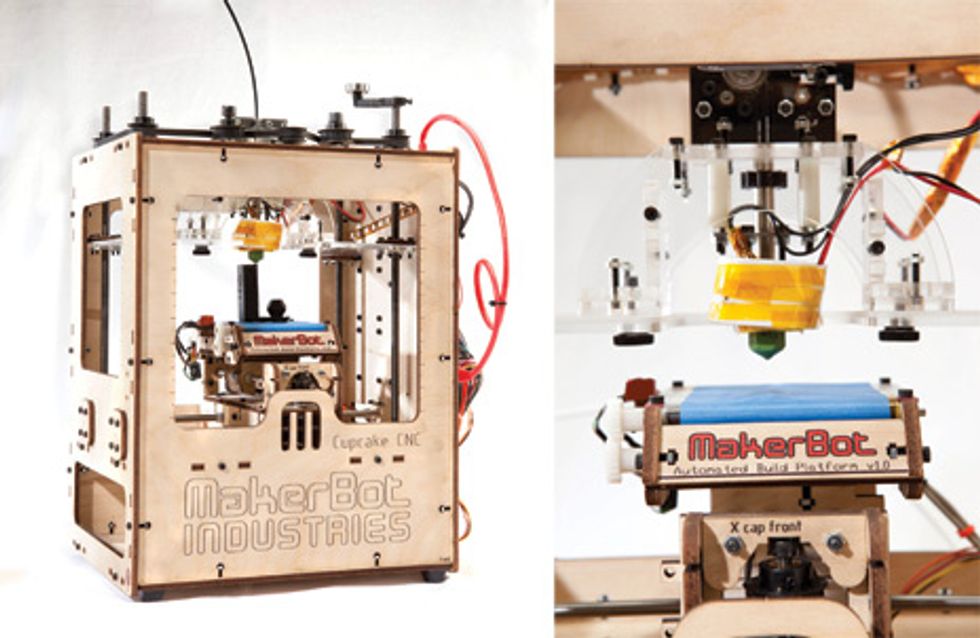I've been building a 3-D printer from scratch for several years, but open-source hardware projects do not favor the leisurely. Between the time I first started ordering parts and when I was ready to assemble them, my controller circuits became antiques, and my ancient printed circuit boards are regarded by today's software with the same sense of befuddlement my son had when looking at a vinyl record.
So when MakerBot Industries, one of the pioneers of prepackaged 3-D printer kits, announced that it was putting its iconic Cupcake CNC model on clearance sale, I decided that my customized version could wait while I built something that actually worked.
The Cupcake is a roughly cubical plywood frame that contains all the mechanical parts needed to extrude plastic (or some other materials) at arbitrary locations within a 100- by 100- by 130-millimeter build space. The device can make small model cars and airplanes, tableware, gear trains, clocks, and anything else that can be modeled as a set of 2-D slices at roughly a half-millimeter resolution. It has stepper motors and bearings to move the build platform and extruder; it also has a DC motor with a toothed pulley. Plastic filament is jammed through a melting chamber heated by a couple of power resistors and then through a 0.35-mm hole onto the build platform.
And it goes together in maybe a week's worth of evenings, including soldering a handful of wires. Most of the work involves tightening nuts on the six or seven dozen 10-mm-long bolts that slide into ingenious slots in the laser-cut plywood sides to lock the whole thing together into a rigid framework.
Assembly was easy, but troubleshooting was hard, especially for a hobbyist with one antiquated multimeter. The build platform moved, the heaters ran right up to 220 °C, but the extruder did not extrude. After painstakingly disconnecting and reconnecting all the electronics, I discovered that the extruder motor had an intermittent short between two of its coils (not a rare problem, according to support forums). MakerBot sent out a replacement, but in the interim I foolishly decided to upgrade the firmware on the extruder board.
That sent me on a several-week detour in which I corrupted the old firmware, downloaded, compiled, and configured new software, ordered and assembled new microcontroller-programming hardware, learned about the secret Java USB library that actually works, then lost the controlling PC to a power surge and transferred its disk to a new one—all because (as I found out later) only an administrator can upload new firmware for my computer's configuration. Eventually, after I set the control program up to run as root, everything worked.
It's amazing. It's addictive. A tiny thread of molten plastic squirts out of the nozzle and solidifies into a spoon or a coat hook or a toy dump truck or a small wrench. The pieces are surprisingly strong. I now have a mile-long list of items to fab, including a shoehorn holder, customized Lego bricks, and a small statue of our cat. Yes, there's software out there to transform a set of photographs taken from different angles into a 3-D representation.
Oh, and—shades of the singularity, when sophisticated robots will manufacture even more sophisticated robots, ad infinitum—I also plan to make parts for an upgraded Cupcake, starting with a stepper-motor-based extruder. And parts for the original fabricator I was going to build before the Cupcake stepped in: mounting brackets, gear trains, maybe even some circuit boards laid out with etch-resist ink.
It's still not that easy, of course. I've already lowered the temperature setting a few degrees, but there are about a hundred other interacting settings—extrusion speed, wall thickness, turning radius, layer height, cooling time, and more—that can be tweaked for the best possible print. And then there's the interesting sensation when your PC loses contact with a machine that unconcernedly continues to spew out hot plastic.
There's also the minor detail that designing things in three dimensions is hard, and would be even if all the available software tools didn't have steep learning curves. On the other hand, OpenSCAD, one of the design programs I'm using, has a cone for a design primitive. That shoehorn holder will eventually be a perfect fit.
This article originally appeared in print as "Absolutely Fab".
About the Author
PAUL WALLICH is a regular contributor to IEEE Spectrum who lives in Montpelier, Vt. This year, he has also written about the economics of lightbulbs, using a manual typewriter as a computer keyboard, and beehacking.

